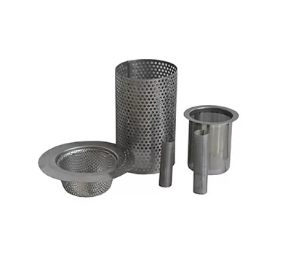In today’s competitive industrial landscape, managing costs without sacrificing product performance is a top priority—especially when it comes to sourcing hydraulic filter mesh. For procurement managers, engineers, and purchasing agents, the challenge is finding that delicate balance between affordability and reliability.
While the lowest-cost options may seem attractive upfront, they often come with hidden risks that could lead to system failures, increased maintenance, and unplanned downtime. This guide explores proven strategies to reduce costs without compromising the quality of filter mesh used in hydraulic filtration systems.
Before even considering cost-cutting measures, clearly define the technical requirements for your filter mesh:
· Operating pressure and temperature
· Contaminant load and particle size
· Flow rate demands
· Fluid compatibility
· Required filtration precision (micron rating)
By tailoring your sourcing to your actual use case, you avoid over-specifying (which leads to unnecessary costs) or under-specifying (which causes premature failure).
Not all filter mesh materials are created equal. Stainless steel remains the gold standard due to its corrosion resistance and mechanical strength, but that doesn't mean it’s always the best or most cost-effective option.
Alternatives worth evaluating:
· Galvanized steel mesh: Suitable for less aggressive environments
· Brass or copper mesh: Ideal for non-sparking or anti-bacterial needs
· Synthetic mesh (polyester, nylon): Effective in low-pressure, low-temperature systems
Choosing the right material for your application—rather than defaulting to premium options—can result in significant savings.
Mesh size (micron rating) and weave type (plain, twilled, Dutch) directly impact filtration efficiency and pressure drop. Many companies over-specify micron ratings, which leads to faster clogging, higher costs, and reduced system performance.
Tip: Work with your supplier to fine-tune the balance between filtration precision and flow capacity, especially if your system doesn’t require ultra-fine filtration.

Bulk purchasing is a well-known way to reduce unit costs, especially when dealing with consumables like filter mesh. However, over-ordering can backfire if storage costs increase or mesh material degrades over time.
What to do:
· Analyze your consumption rate across multiple product lines
· Consolidate orders across departments or branches
· Consider annual contracts with flexible delivery schedules
While offshore suppliers may offer lower base prices, hidden costs such as shipping delays, duties, and quality control issues can outweigh savings.
Benefits of working with local or regional suppliers:
· Faster lead times
· Easier quality inspections
· Reduced shipping costs
· Greater responsiveness to design or spec changes
This doesn't mean avoiding overseas suppliers entirely—just ensure your total cost of ownership is evaluated holistically.
Hydraulic filter mesh is used both in original equipment manufacturing (OEM) and in the aftermarket for system maintenance. Depending on your volume and specifications, you may benefit from:
· OEM partnerships: For custom-fit mesh elements
· Aftermarket sourcing: For high-volume replacements with more pricing flexibility
Matching your sourcing channel to your application phase (build vs. maintenance) is a cost-saving tactic often overlooked.
Many plants use different types of hydraulic machinery with varying filtration requirements. However, it’s often possible to consolidate mesh specs across platforms.
Benefits of standardization:
· Simplified inventory
· Volume discounts
· Streamlined procurement and training
Standardization doesn’t mean “one-size-fits-all,” but finding compatible mesh solutions for multiple systems can improve operational efficiency.
Before placing a large order, ask for mesh samples or pilot runs. Testing the mesh in real-world conditions allows you to validate quality without full commitment.
Key validation checks:
· Filtration efficiency (ISO or SAE standard tests)
· Structural integrity under pressure
· Cleanability and reuse potential
· Flow rate consistency
This step ensures the cost-saving mesh won’t compromise your system’s performance.
Filter mesh technology is not static. New developments in material science, manufacturing automation, and sensor integration are lowering production costs while improving quality.
Emerging trends to monitor:
· Laser-welded mesh seams for enhanced durability
· Multilayer composite mesh for complex filtration needs
· Smart mesh integration for digital monitoring and predictive maintenance
Keeping up with trends allows you to adopt more efficient solutions early—often at competitive prices before the mainstream catches on.
Some suppliers offer free or low-cost engineering consultation, helping you redesign your mesh selection to reduce cost and improve performance.
Supplier-provided value adds:
· CAD-based mesh modeling
· Failure analysis
· Custom prototyping
· Fast-track modifications for urgent needs
Working closely with a technically capable supplier can lead to long-term savings far beyond just unit pricing.
Cutting costs in filter mesh sourcing doesn’t have to come at the expense of quality. Instead, it requires smart decision-making across multiple variables—from material selection and design optimization to supplier relationships and application-specific configurations.
By leveraging these strategies, you can:
· Extend the service life of your filters
· Minimize unplanned downtime
· Optimize procurement spend
· Maintain the performance your equipment demands
Looking for high-performance filter mesh that balances cost and quality? Jiushen specializes in precision-engineered mesh solutions tailored for hydraulic systems in every industry. Our technical team helps buyers cut costs intelligently—without sacrificing durability or filtration standards.
Contact Jiushen today to unlock smarter sourcing for your hydraulic filter mesh needs.
Copyright © Hebei Jiushen Wire Weaving Co., Ltd. All Rights Reserved. |
Sitemap
| Technical Support:
